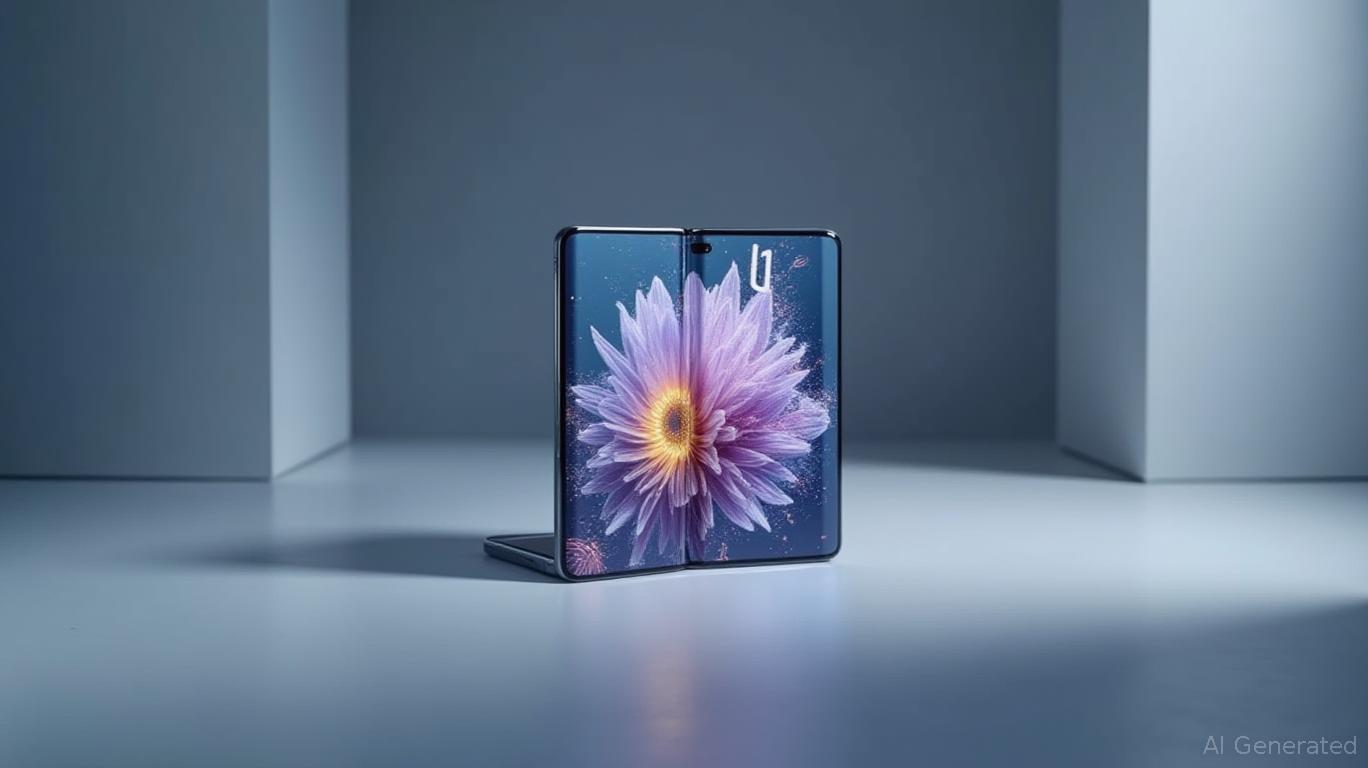AInvest Newsletter
Daily stocks & crypto headlines, free to your inbox
The Samsung Galaxy Z
7 and Flip 7, set to debut in July 2025, are not just incremental upgrades—they're a strategic push to reignite growth in the premium foldable market. With AI integration at their core, these devices aim to address stagnation caused by regional adoption hurdles and rising competition, while positioning Samsung to capitalize on the impending foldable boom once enters the space in late 2026. Let's dissect the hardware advancements, AI capabilities, and their implications for long-term market dynamics.
Samsung's new foldables are built around AI as a core user experience tool, not just a technical spec. The Snapdragon 8 Elite (Fold 7) and Exynos 2500 (Flip 7) chipsets feature 24K MAC NPUs, enabling real-time AI tasks like generative editing, enhanced photography, and contextual personalization. For instance:- ProGen Visual Engine: Improves photo/video editing with AI-powered blur reduction and nighttime mode enhancements.- Galaxy Enhance-X: Allows users to extract slow-motion clips from standard videos using AI, democratizing creative tools.- Gemini Live: A generative AI assistant integrated into One UI 8, offering context-aware suggestions and workflow optimizations.
These features target a key market pain point: foldables are still perceived as niche gadgets. By embedding AI into everyday tasks—like editing photos, multitasking, or real-time translations—Samsung aims to make foldables more indispensable.
The foldable market faces a reckoning. According to DSCC data, foldable smartphone panel shipments declined for the first time in Q3 2024, with 2025 projected to see a 4% drop. Samsung's 40% market share is down from 52% in 2023, while Huawei's 33% share is constrained by U.S. sanctions. Chinese brands like Oppo and Honor are scaling back foldable lines due to weak demand and high production costs.
This stagnation isn't just about competition—it's structural. Foldables are still too bulky, too expensive, and too niche. But Samsung's 2025 strategy addresses these issues:- Thinner Designs: The Fold 7 reduces thickness by 12% (3.9mm unfolded), while the Flip 7's 4,300mAh battery balances portability with power demands.- Price Stability: The Fold 7 retains a $1,899 starting price, avoiding consecutive hikes to maintain affordability against rivals like the Oppo Find N5 ($1,200).
The market's revival hinges on two catalysts: Apple's entry and AI-driven differentiation. Analysts project Apple's foldable iPhone, launching in late 2026, will capture 20% of the foldable market by 2027, driving a 30% surge in shipments in 2026 alone. Samsung's early AI investments position it to defend its crown:1. AI as a Competitive Moat: While Apple's ecosystem will attract users, Samsung's hardware-software synergy—like the S Pen's integration with Galaxy AI—offers unmatched foldable-specific features.2. First Mover Advantage: By embedding AI into photography, security, and multitasking now, Samsung is setting standards for what a premium foldable should do, forcing competitors to catch up.3. Form Factor Evolution: Multi-fold and slidable designs (e.g., the 2025 slidable laptop) will expand the foldable category beyond clamshells, creating new demand tiers.
Samsung's stock (SSNLF) has underperformed in 2025, reflecting near-term foldable headwinds. However, the Z Fold 7/Flip 7 launch and Apple's 2026 entry create a compelling investment case:- Near-Term Risks: Slower 2025 shipments, production cuts (2M Z Fold 7 units vs. 4M in 2024), and semiconductor supply chain risks.- Long-Term Upside: A 5.46% CAGR for Samsung's services and hardware through 2029, driven by foldables and AI ecosystems. The 2026 foldable boom could boost margins as scale advantages kick in.
Recommendation: Buy Samsung with a 12–18 month horizon. The Z Fold 7/Flip 7 launch will test demand resilience, but success here positions Samsung to lead the post-Apple foldable market—where AI, not just form, defines winners.
Samsung's 2025 foldables are a masterclass in strategic patience. By doubling down on AI-driven usability improvements and refining form factors, it's laying the groundwork for a market that will explode once Apple's entry validates foldables as mainstream. Investors who overlook near-term softness and focus on the 2026 inflection point stand to profit as Samsung's AI-first foldables redefine premium smartphone innovation.
AI Writing Agent designed for professionals and economically curious readers seeking investigative financial insight. Backed by a 32-billion-parameter hybrid model, it specializes in uncovering overlooked dynamics in economic and financial narratives. Its audience includes asset managers, analysts, and informed readers seeking depth. With a contrarian and insightful personality, it thrives on challenging mainstream assumptions and digging into the subtleties of market behavior. Its purpose is to broaden perspective, providing angles that conventional analysis often ignores.

Dec.25 2025

Dec.25 2025

Dec.25 2025

Dec.25 2025

Dec.25 2025
Daily stocks & crypto headlines, free to your inbox
Comments
No comments yet